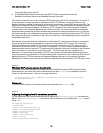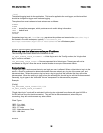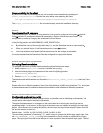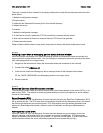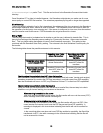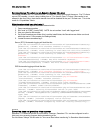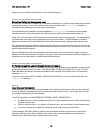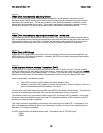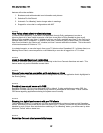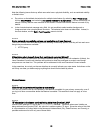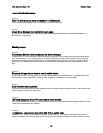IBM Lotus Sametime 7.5.1 Release Notes
unless
y
ou have acquired and deplo
y
ed a virus scannin
g
pro
g
ram.
Sametime, Sametime Gateway, Sametime Mobile
Sametime Policy for Anonymous user
If Anonymous user access is allowed by a Sametime administrator, a specific policy needs to be provided
for anonymous users. A new "Anonymous" policy set is provided in the stpolicy.ntf template; it
includes the same attribute set as any other specific policy.
The Sametime server installation process establishes
stpolicy.nsf
. As a result, this data storage
includes two built-in policy documents: the Default policy set and the Anonymous user policy set.
Using Policy API, the Admin UI Policies page shows the policy rules and assignments. The Administrator
can create new user policy sets and assign users and groups to them. The Administrator is unable to
delete the necessary policy sets (Default and Anonymous) and to assign users/groups to them as well.
If an Administrator does not intend to apply a specific policy to an anonymous user, they can set all of the
Anonymous policy attribute values as inherited from the Default policy set. Then, an Anonymous user will
get the default policies applied.
Even if administrator marks some attribute in the Default policy set as "Override all policies", the same
attribute in the Anonymous policy set gets its own policy value, since the Anonymous policy is designed to
be stricter than any other policy as well as that the Default policy.
Sametime, Sametime Gateway, Sametime Mobile
STPolicy exhaustive search through Domino Directory
The NOTES
_
NAME
_
LOOKUP
_
EXHAUSTIVE flag in the [Policy] section of the sametime.ini file indicates
which kind of Directory search is used. If NOTES
_
NAME
_
LOOKUP
_
EXHAUSTIVE=1 is set, STPolicy
Notes BlackBox performs an exhaustive memberOf search through all the NABs, both local and those
referred by da.nsf.
Otherwise, when either NOTES
_
NAME
_
LOOKUP
_
EXHAUSTIVE=0, or is not provided, only the local
names.nsf is searched.
Sametime
User Consent framework
The Sametime server, by default, allows external users to watch internal users; now it can be configured
so that, by default, all external users are not allowed to watch internal users. This configuration is made
by changing the sametime.ini file as follows:
In the [Config] section add AWARENESS
_
EXTERNAL
_
NEED
_
PERMISSION=1
z
By default the value of this configuration flag is 0, and the Sametime server allows external users
to watch internal users
z
When you set this flag to 1, by default, all external users are not allowed to watch internal users
z
You must shutdown and restart the Sametime server for the change to take effect.
In the Sametime UIM client, when an external user subscribes to watch an internal user, the internal
Sametime UIM client user will be notified by the server, and can decide whether or not to allow the
external user to watch their status, and be able to start a chat.
52



